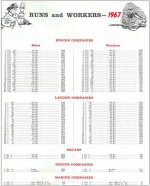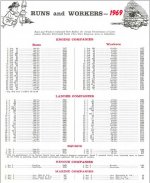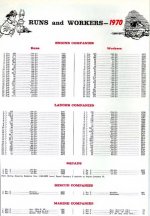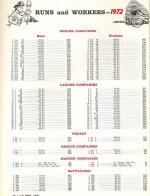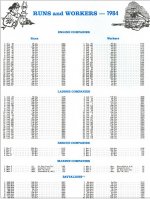FDNY's "War Years" ran from the late 1960s through the 1970s (and maybe 1980s) depending upon how you define the period of tremendous fire activity in many parts of NYC (S Bronx, Harlem, Brownsville, ENY, LES, Williamsburg, Bed-Sty, etc). It was experienced in many, or even most, parts of the city. Companies had 4000 runs a year in many parts of the city and did not make lists acknowledging the busiest units. 20 runs, 4 or 5 fires, no time for meals, back-to-back-to-back runs - all were common experiences.
As Johnny Gage noted, there were many causes but it seemed to be triggered in NYC, and many other cities, by a period of civil unrest characterized by large scale riots, lawlessness, violence and arson. The era saw not only countless fires but also endless false alarms and emergency responses. Note the R&Ws for War Years periods below which were primarily company responses for fires - not EMS runs (although there were many shootings, fights and muggings that FDNY responded to). This was a firefighting era that most likely will never be repeated - a period of low budgets, layoffs, company interchanges, 2nd sections, Adaptive Response, Discretionary Response Boxes, Red Caps, Tin House firehouses, extra divisions and battalions, frequent attacks on FFs, Dispatcher 3rd and 4th Alarms, etc - which impacted most neighborhoods. Interesting enough, it was not even labeled "The War Years" until years of relentless fires left neighborhoods empty and lots filled with rubble, like bombed out World War II cities in Europe. As said before, it was the best of times and the worst of time.
View attachment 15147
View attachment 15140
View attachment 15141
View attachment 15142
View attachment 15143
View attachment 15144
View attachment 15145
View attachment 15146

